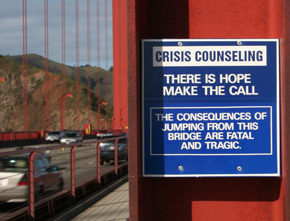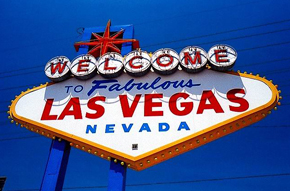The Jump

“There are almost twice as many suicides than homicides in the United States in any given year.”
Recently, I e-mailed an old friend – a friend who has drifted in and out of my life for years but nevertheless a good friend that I think of often. More time than usual had passed since I’d last heard from her and I just felt I needed to reach out to her.
Interesting how – if we’re listening – our instincts are usually telling us something…
Her return e-mail held devastating, shocking news. Last August, she told me, she attempted suicide by jumping from the roof of a five-story building. After the initial shock, I found myself with a lot of questions, some big and existential, but some trivial…like – did she leave her keys in her car when she parked it in front of that building? Or eat a special meal right before? Did she dress up for the occasion? Did she leave dirty dishes in the sink? I think I found it easier to focus on those smaller questions than to hear the answers to the really big ones.
Like, how do you get to that place, alone on the roof of a building, ready to jump? I don’t understand. I do believe we all have light and dark, good and evil – it’s how we balance it all. Some of it shines through brighter at different periods of our lives. At that point, her light had dimmed to nothingness – she clearly wanted to die. Yet, she didn’t succeed. Where do you go from that?
Life is ultimately about the individual’s free will and choice, but the choice to end your own life strikes me – at least on the surface – as a fairly selfish one. One that has far-reaching ripple effects that force the people left behind to pick up the pieces you decided to drop on them.
I wonder where, when and how the fine line between depression and suicide gets crossed? Is it a slow process or a spur of the moment, no looking back, almost on a whim decision? Is it mental illness? Can you be sane and still undertake this ultimate act of finality? Was she on medication that could have contributed to her suicidal behavior? It has been well documented that some anti-depressants and psychotropic drugs – in an amazingly ludicrous case of irony – cause suicidal ideation in teens and young adults – for my money, it’s not much of a leap to believe that they’ll eventually find out these meds may be affecting older adults too.
I thought I might find some of the answers in the documentary film, The Bridge in which Director Eric Steel and his crew capture 23 of the 24 suicides that occurred at the Golden Gate Bridge during 2004.
Imagine, cameras capturing the final moments of a person’s life – seconds before they leap to their deaths. As a film, The Bridge was spellbinding – the juxtaposition of incredibly silent and hauntingly beautiful cinematography pitted against the unseen, yet somehow palpable chaotic thoughts of the would-be jumper as they actually begin to climb over the railing. And realizing that throughout, the film crew is somehow able to maintain sufficient emotional distance to watch impassively as a life is snuffed out right before their eyes.
But as an object lesson – it didn’t deliver. I wanted more. I wanted answers to my questions. I wanted qualifiers and hard facts from the filmmaker or expert psychologists or something. Not just emotional interviews from family members who, by the way, while interviewed had no idea that their loved ones’ final moments had been captured on film.

Oddly, that four-second fall from the Golden Gate has become the gold standard of romanticized suicide. This otherwise benign Marin County landmark is such a popular venue for ending one’s life that in 2006 the bridge was fitted with barriers designed to prevent “jumpers.”

But the Golden Gate may not hold its dubious honors for long. Las Vegas is giving the bridge a run for its money…The Las Vegas Sun reports that suicide in that city is 50% higher than the rest of the country with an average of one suicide per day – my friend is one of those statistics. That’s why they blow my mind even more. Vegas is where my friend lived and where she almost died by her own hand. I wanted desperately to understand how she got to that point – was it Vegas? Was it something else?
What is the role of a friend or family member or colleague who suspects someone is suicidal? I mean, this is their life and their chosen fate. They maybe – Just. Want. To. Die. To. End. It. All. To. Be. Done. On the one hand, we are hard-wired to save them, but why? Is it for our own selfish reasons, or because we are taught from day one that, at best, suicide is anathema to the human condition, and at worse, a “mortal” sin. On the other hand, the families and friends of people who are suicidal eventually tire of the often Herculean effort it takes to save them – without professional help and support for both sides – it’s a battle too easily lost.
In a way, I was lucky. I got to hear from my friend – again. She gets a second chance and I get a second chance to truly understand what happened. Because believe me, the person on that roof in Las Vegas was not the person I know and love.
I needed to tell this story to gain some understanding, but I also realize that I might be able to help someone else going through this (on either side). Admitting that you are depressed – even suicidal – doesn’t make you weak. It is actually a brave undertaking – to stand naked in front of the world and risk the stigma associated with depression and mental illness and save yourself in the bargain. This doesn’t make you anything different than what you already were – just a person trying to make it in this mixed up world.








